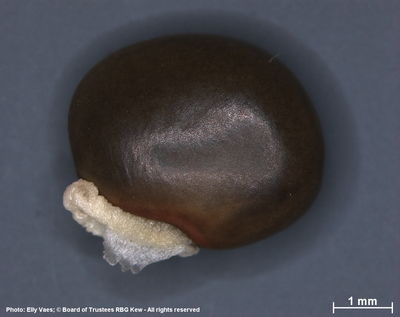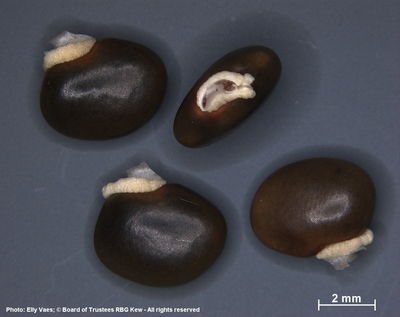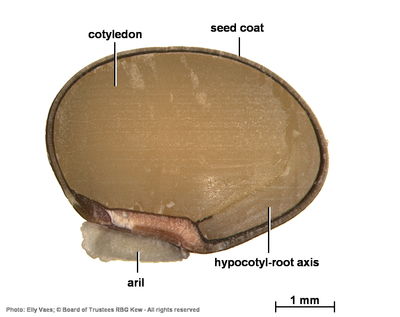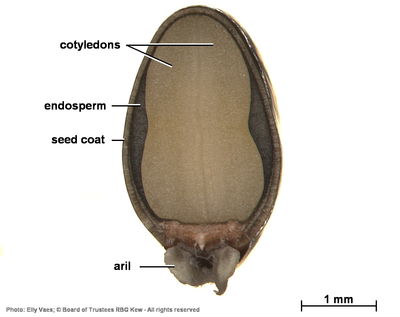Legumes of the World. Edited by G. Lewis, B. Schrire, B. MacKinder & M. Lock. Royal Botanic Gardens, Kew. (2005)
-
Note
-
Previous accounts of the Phaseoleae by Baudet (1978) and Lackey (1981) recognised 90 and 84 genera and c. 1540 and 1480 species respectively in the tribe. In an equivalent, i.e. traditionally held view of Phaseoleae, 89 genera and (1554)–1567–(1580) species are treated here (Table 9; Fig. 47). Changes between Baudet (1978) and this treatment are that eleven genera are now in synonymy or have subsequently been placed in Millettieae, two genera have been transferred from Desmodieae and eight new genera have been added. Vigna has traditionally been thought to comprise some 150–200 species, but Vigna sens. strict. may contain fewer than 100.
Recent molecular analyses of the tribe, however, have emphasised both the polyphyletic and paraphyletic nature of Phaseoleae as traditionally circumscribed (Bruneau & Doyle, 1990; Doyle & Doyle, 1993; Delgado Salinas et al., 1993; Bruneau et al., 1995; Doyle et al., 1997, 2000; Kajita et al., 2001; Goel et al., 2001; Lee & Hymowitz, 2001). This has required a radical realignment of elements of the phaseoloids (Table 9; Fig. 47), with at least two major clades being evident: Phaseoleae subtribes Diocleinae and Ophrestiinae which together with tribe Abreae are allied to the core-Millettieae (Fig. 45), and the remaining groups comprising a Phaseoleae sens. lat. clade. The rbcL phylogeny of Kajita et al. (2001) and the ITS analysis of Hu et al. (2002) are equivocal as to which clade subtribe Clitoriinae belongs. Phaseoleae sens. lat. also includes two traditionally independent tribes, the Desmodieae and Psoraleeae. Delimiting a recircumscribed Phaseoleae sens. strict is thus very problematic. A solution may be to recognise a broad tribe Phaseoleae, comprising the subtribes Kennediinae, Cajaninae, Phaseolinae and Glycininae, assorted basally branching genera, and tribes Desmodieae and Psoraleeae (both treated at subtribal level).
Molecular evidence presents conflicting views of relationships between the Ophrestiinae and the rest of Phaseoleae. A basal position near the Diocleinae-Millettieae is proposed by Bruneau et al. (1995), while Hu et al. (2000) indicate that relationships are rather with the Phaseoleae sens. strict., near to Glycininae; disparate elements in this species complex are thus indicated, but to date the molecular evidence is based only on samples of two African species of Ophrestia; Asian species as well as representatives of Cruddasia should be sampled to clarify the phylogenetic position of Ophrestiinae. Recent molecular evidence of Doyle et al. (2000) and Kajita et al. (2001) supports the Bruneau et al. (1995) placement although here Ophrestiinae is sister to core Millettieae and both are sister to the Diocleinae
-
Habit
-
Herbs or shrubs
-
Ecology
-
Seasonally dry tropical forest, woodland, bushland, thicket and grassland
-
Distribution
-
Africa (9 spp. mostly Zambezian to Zanzibar-Inhambane and Tongaland-Pondoland regions) and Madagascar (4 spp.); Indian subcontinent, S China, Indo-China (c. 3 spp.)






